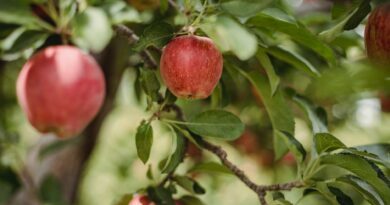How to Grow and Harvest Flavorful Radishes: A Comprehensive Guide
Radishes are a versatile and easy-to-grow vegetable that offer numerous health benefits. They are a member of the brassica family, which includes other popular vegetables such as broccoli, cauliflower and cabbage. Radishes come in a variety of shapes, sizes and colours, ranging from the small and spicy red radishes to the large and mild daikon radishes. Whether eaten raw, cooked or fermented, radishes add a crisp and refreshing flavour to any dish.
In addition to their delicious taste, radishes offer numerous health benefits. They are low in calories and high in fibre, making them a great addition to a healthy diet. Radishes are also packed with vitamins and minerals, including vitamin C, folate, potassium, and magnesium. These nutrients are essential for maintaining a healthy immune system, promoting healthy digestion and reducing inflammation in the body.
One of the most significant health benefits of radishes is their high content of antioxidants. Antioxidants are compounds that protect the body from harmful free radicals, which can damage cells and contribute to chronic diseases such as cancer and heart disease. Radishes are particularly rich in anthocyanins, which are a type of antioxidant that gives red, purple and blue fruits and vegetables their vibrant colour.
Growing radishes is also a great way to add fresh, healthy produce to your diet. They are easy to grow and can be planted in the garden or in containers. With a little bit of care and attention, you can enjoy a bountiful harvest of crunchy and nutritious radishes throughout the growing season.

In this comprehensive guide, we will explore how to grow radishes and provide you with some delicious meal ideas to help you make the most of your harvest. From salads and sandwiches to dips and kimchi, there are many ways to incorporate radishes into your meals. So, let’s get started on growing and enjoying this versatile and healthy vegetable!
- Soil Preparation
Radishes prefer a loose, well-draining soil that’s rich in organic matter. You can improve the soil by adding compost, well-rotted manure, or other organic matter. Radishes prefer a pH range of 6.0 to 7.0, so it’s important to test your soil and amend it accordingly. You can also add a balanced fertiliser to the soil a week before planting.
- Planting
Radishes can be sown directly into the garden soil as soon as the soil can be worked in the spring. Sow the seeds thinly, about half an inch deep and one inch apart. Thin the seedlings to one inch apart when they have two to three true leaves. Plant new seeds every two to three weeks for a continuous harvest.
- Sunlight
Radishes prefer full sunlight, but they can also tolerate partial shade. If your garden is shaded, plant your radishes in a spot that gets at least four hours of direct sunlight per day.
- Watering
Radishes need consistent watering to prevent the roots from becoming woody or splitting. Water the soil deeply once a week, or more frequently during hot, dry weather. Be sure to water the soil and not the leaves to avoid the risk of fungal diseases. Mulching around the base of the plants with straw or compost can help retain moisture and suppress weed growth.
- Harvesting
Radishes are ready to harvest when they are about one inch in diameter, usually in 20 to 30 days after planting. They should be firm and crisp, with a mild flavour. Pull them out of the soil gently, and cut off the tops before storing in the refrigerator.
- Meal Ideas
Radishes are a versatile vegetable that can be eaten raw or cooked. Here are some meal ideas:
- Radish salad: Thinly slice radishes and toss them with lettuce, cucumber, and a vinaigrette dressing.
- Radish sandwiches: Spread cream cheese on a slice of bread, top with thinly sliced radishes, and season with salt and pepper.
- Roasted radishes: Toss radishes with olive oil, salt, and pepper, and roast in the oven at 400°F for about 20 minutes, until tender and lightly browned.
- Radish dip: Blend roasted radishes with Greek yogurt, garlic, and lemon juice for a healthy and flavourful dip.
Growing radishes is a great way to add a nutritious and delicious vegetable to your diet. They are easy to grow and offer numerous health benefits, including being low in calories, high in fibre, and rich in antioxidants. Whether eaten raw, cooked or fermented, radishes add a refreshing and crunchy texture to any meal.
By following the tips in this comprehensive guide, you can grow healthy and productive radishes that will provide a bountiful harvest throughout the growing season. From preparing the soil to harvesting the crop, every step in the process is important to ensure a successful and abundant harvest.
And once you have harvested your radishes, there are many delicious meal ideas to choose from. Whether it’s adding them to salads, sandwiches or dips, or roasting or fermenting them for a more unique flavour, radishes are a versatile and tasty vegetable that can be enjoyed in many different ways.
So, whether you’re an experienced gardener or a beginner, don’t hesitate to try growing radishes in your allotment or in containers. With a little bit of care and attention, you’ll be rewarded with a healthy and delicious crop that you can enjoy all season long.




